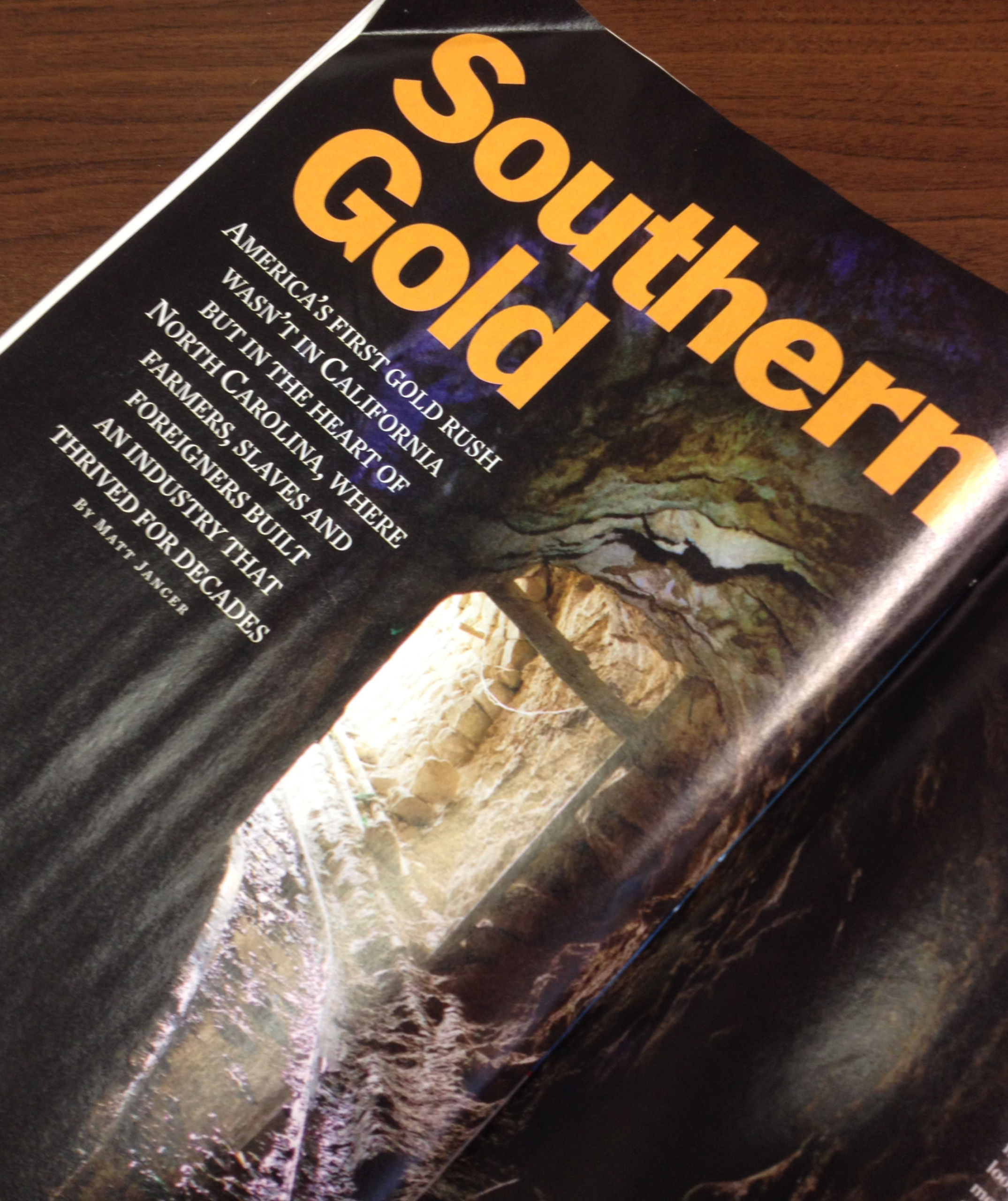 Regular attendees of the John Locke Foundation’s weekly Shaftesbury Society luncheons will remember John Hood’s 2012 presentation on North Carolina’s “gold rush.” Now History Channel Magazine devotes four pages to the same topic.
Regular attendees of the John Locke Foundation’s weekly Shaftesbury Society luncheons will remember John Hood’s 2012 presentation on North Carolina’s “gold rush.” Now History Channel Magazine devotes four pages to the same topic.
Matt Jancer’s article is not yet posted online, but here’s an interesting excerpt.
The gold industry in North Carolina actually found its footing accidentally. In 1825, while panning along a vein of quartz in a creek on his farm, Matthias Barringer noticed that gold could be found easily when he dug below the vein. The shaft he cut became the Barringer Gold Mine, the first operational shaft mine in the United States. As word of the volume of gold being discovered in North Carolina spread beyond state lines, men and material moved in. From New York came investors. Miners came from Cornwall, England, Wales and Germany and from the European operations in South America. They arrived with advanced mining equipment and techniques. …
… According to [Reed Gold Mine historic interpreter Aaron] Kepley, for many years, much of the U.S.-produced gold going to the Philadelphia Mint was coming from North Carolina. In 1837, the volume of gold in the region led the U.S. government to establish the Charlotte Mint in Charlotte, N.C., in proximity to many of the gold-producing mines, such as the Reed Gold, Barringer Gold and Gold Hill, the largest of them.
Learn more about North Carolina’s golden history from the N.C. History Project.


